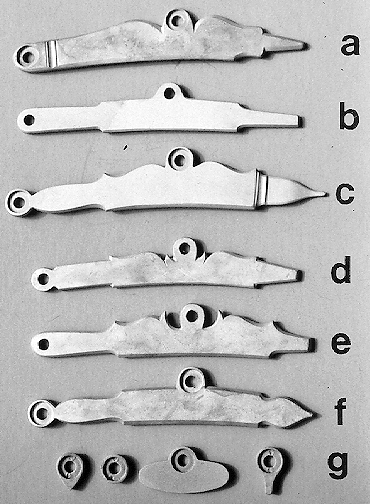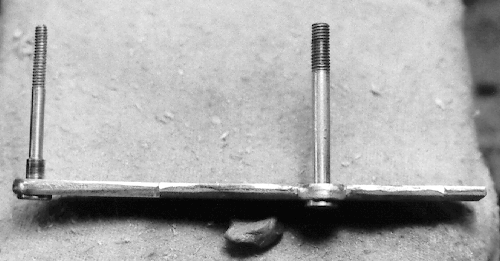|
Muzzle Blasts Online |
|
...for the muzzleloading enthusiast |
|
The muzzleblasts.com domain, subdomains, content, etc., are neither affiliated with the NMLRA nor its paper magazine Muzzle Blasts |
|
Muzzle Blasts Online |

|
|
|
|
|
|
Confessions of a Side Plate Junkie
Compulsive-obsessive behavior is defined as an irresistible impulse to perform an irrational act. There are compulsive eaters, compulsive shoppers, and compulsive bathers. Government programs have been established in some cases to help victims cope with their obsessions. There is no government program to help me. Last night, when the house was quiet, I crept downstairs to the rifle shop and counted 43 side plates in my parts bins. I am a side plate junkie.
Fortunately, help is on the horizon. Bill Cox, President of L & R Lock Company, Inc., has recently developed a line of side plates which are compatible in style and dimensions with his fine locks. The availability of side plates designed to complement specific locks eliminates the frustration of wanting to use a given side plate on a particular style rifle, only to find that its dimensions make it incompatible with the lock. Parts suppliers have addressed this problem to some extent by casting side plates with elongated forward extensions which can be cut and shaped to accommodate locks of various dimensions. Track of the Wolf has gone one step farther and has pictured side plates and many other parts at exact actual size in their excellent catalog so that one can measure bolt-to-bolt distances and other necessary dimensions. Now, with the debut of the L & R line of side plates, side plate junkies such as me may be able to give up gradually the security blanket of keeping bushels of side plates to cover any contingency of style and dimensions.
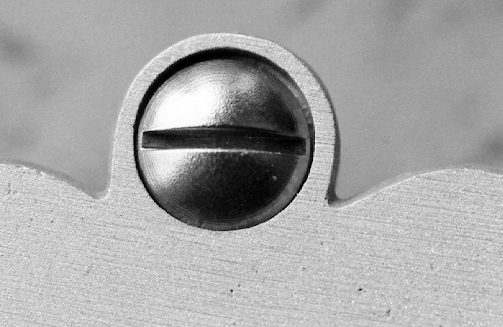
|
|
The countersunk recess for the head of the lock bolt will conceal small mistakes in lining up a true 90 degrees between plate and hole. |
- it minimizes interference from the breech plug bolster (often a crescent is cut from the bolster to allow sufficient clearance for the rear bolt);
- it allows the bolt to pull more evenly on the lock and reduces the locks tendency to cant horizontally or vertically in its inlet if the underlying wood in the mortise is not perfect (and whose is?); 3) it allows latitude, without interference from the side plate, to create a deep and graceful scallop from the tang level to the barrel channel level (an awkward area where too much wood is often left by the beginning rifle stocker).
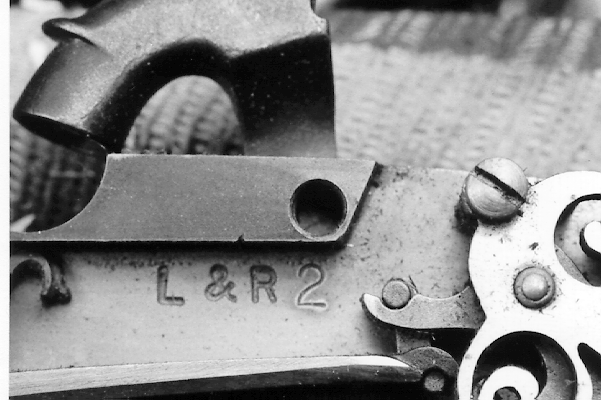
|
|
The hole for the rear lock bolt should be drilled and tapped to the rear of the bolster and down from the top edge of the plate. |
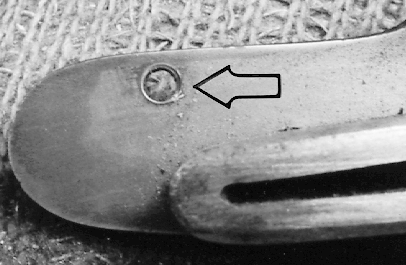
|
|
If necessary, high placement of the forward lock bolt can avoid interference with the passage of the ramrod under it. |
All of the L & R side plates appear easy to inlet because of their generous thickness (which makes them rigid and durable) and ample draft which makes possible a tight press fit. The apparent ease with which a side plate can be inletted may be deceptive however, since its placement is critical to both the function and beauty of the rifle. Its placement is complicated by the fact that the lock panels of most rifle styles are not parallel, but taper inward toward the front; the difference between the side-to-side spans of fore and aft may be 1/8" or more with a tapered or swamped barrel. Therefore, this is not a matter of merely matching two parallel opposing surfaces. Alignment of holes for the cross bolts is crucial to the correct mating of parts. In the best of all possible worlds, a precisely drilled ramrod hole, adequate forethought, and compatible parts will allow all the pieces to fit together without interference.
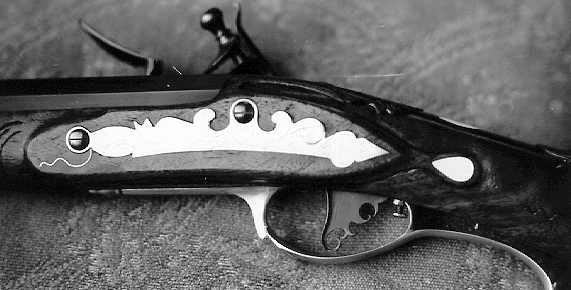
|
|
When the forward tip of this side plate had to be tipped up a bit to avoid interference of the lock bolt with the ramrod, I used a little wire inlay to restore the balance of the plate. |
L and R's nice assortment of side plates will be a welcome addition to its product line. Their grace and compatibility with the off-side lock panel (a consideration which seemed to escape a lot of the old time gunsmiths) will win them ready acceptance with contemporary builders. I wonder if my 43 other side plates would move at a Saturday morning yard sale...
Footnotes:
1. Buchele, W., Shumway, G. & Alexander, P.A. Recreating the American Longrifle. G. Shumway, Publisher, York, PA, 1984, p. 106.
2. Alexander, P.A. The Gunsmith of Grenville County, Muzzleloader July/August, 1992, p. 21.
